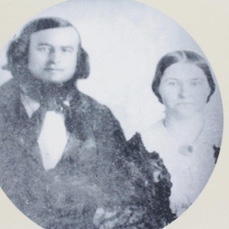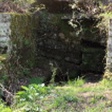On a chilly morning in February of 1882, a crowd gathered at the Frisco train station in Fayetteville, AR to greet an overnight train that had been specially dispatched the night before.
The train’s melancholy mission completed, a group of men stepped up and forlornly unloaded the coffin of one of the most prominent and well-known citizens in the entire state, Peter Manelis Van Winkle.
The pall-bearers loaded the coffin into a horse drawn carriage; Van Winkle’s family members filled the carriages immediately following the hearse.
The processional traveled down Dickson street, then turned south onto College, where they traveled approximately three blocks before turning on to Center street. In the middle of the thoroughfare, the horse-drawn hearse came to a stop in front of the Van Winkle Hotel.
The building was draped in mourning, signifying the death of of someone significant; there, the body of Van Winkle was carried into the hotel, where it laid in state from Friday morning until Sunday afternoon.
Where it all Began
Peter Van Winkle and his wife, Temperance had arrived in Northwest Arkansas from Illinois nearly fifty years earlier. Soon after their arrival, Van Winkle purchased 80 acres in Washington County for $1.50 per acre.
Thirteen years later, in 1851 the Van Winkles purchased land in Benton County, close to the historic War Eagle Mill. Here, Van Winkle built, owned and operated the largest lumber mill in the area.
For the rest of the decade, life was good for the Van Winkles; they raised a family and expanded the lumber mill into a force to be reckoned with . Although the magnificent, antebellum home is no longer present, the beautiful hollow where the Van Winkles built their home looks much the same as it did when they lived there. Stones from the terraced garden remain. As Lynn and I studied the layout of the estate, we discovered that the garden was in full view from the balconies of the upper stories, no doubt a pleasant respite from the intense heat of many an Ozark summer.
The Civil War Years
The dawn of the 1860s brought a sense of foreboding to the area; a bloody war between the states was inevitable. What was once believed to be a short lived skirmish turned into four bloody years of all out war. The entire Van Winkle family was disrupted in a profound way.
Van Winkle played a pivotal role for the Confederate cause; as the owner of the largest lumber mill in the area, he was commissioned to build a headquarters of sorts for the Confederate army. He ultimately built 39 cabins for Confederate commanders in the area, along with five stables for their horses. The location of the compound was critical; only 18 miles from the Missouri border, it allowed Confederate leaders to keep an eye on Union activity across the state line.
Prior to the Battle of Pea Ridge, Van Winkle loaded up his family and slaves and waited out the rest of the war in Texas. Peter and Temperance’s 9th child, Robert E. Lee Van Winkle, was born there.
After the war, the Van Winkles returned to their home near War Eagle — but what they came home to would have caused men of lesser fortitude to crumble. But Van Winkle was not defeated.
In our next post, we will share what life was life in post- war Arkansas, and how the Van Winkles influenced the rebuilding of the entire area during the difficult Reconstruction years.



